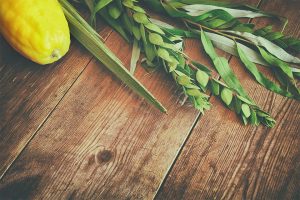Services every Saturday at 10:40 AM
Sukkot

Sukkot, also known as the Feast of Tabernacles (or booths), is a week-long celebration of the fall harvest and a time to build booths (temporary shelters of branches) to remember how the nation of Israel lived under G-D’s care during their forty years in the wilderness (Nechemyah/Nehemiah 8:14-17). It is a time of rejoicing in G-D’s forgiveness and material blessings, as well as remembering His faithfulness and protection. Jews all over the world continue to celebrate Sukkot by building and dwelling in (or eating meals in) temporary booths for eight days. There are four special plants used to cover the booth: citron, myrtle, palm and willow (Vayikra/Leviticus 23:40).
Sukkot is one of the three pilgrimage feasts when all Jewish males were required to go to Jerusalem to “appear in the presence of ADONAI” (D’varim/Deuteronomy 16:16).
A lulav, made of willow, palm, and myrtle branches, along with the etrog (citron), is waved in all four directions (North, South, East and West), as well as up and down to symbolize that G-D’s presence is everywhere.
During the Temple era, two ceremonies were traditionally part of the last day of Sukkot. In one of the ceremonies, people with torches marched around the Temple and then set lights around the walls of the Temple, symbolizing that Messiah would be a light to the nations (Yesha’yahu/Isaiah 49:6). In the second ceremony, a priest carried water from the pool of Shiloach (Siloam) to the Temple, symbolizing the Messianic age to come when the whole earth will know G-D “as water covering the sea” (Yesha’yahu/Isaiah 11:9).